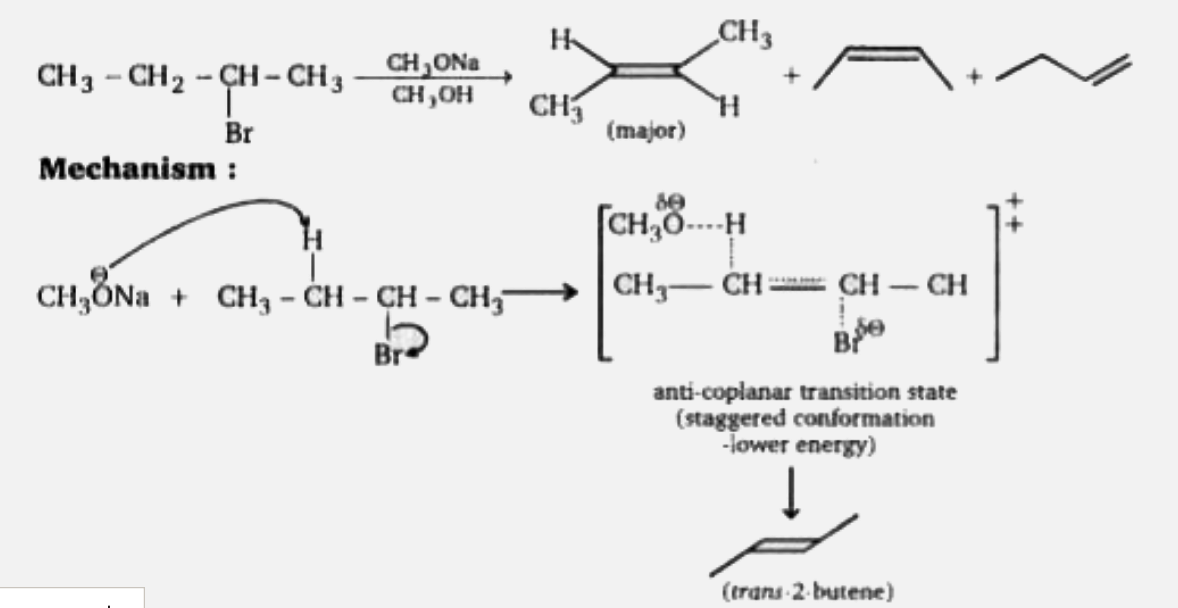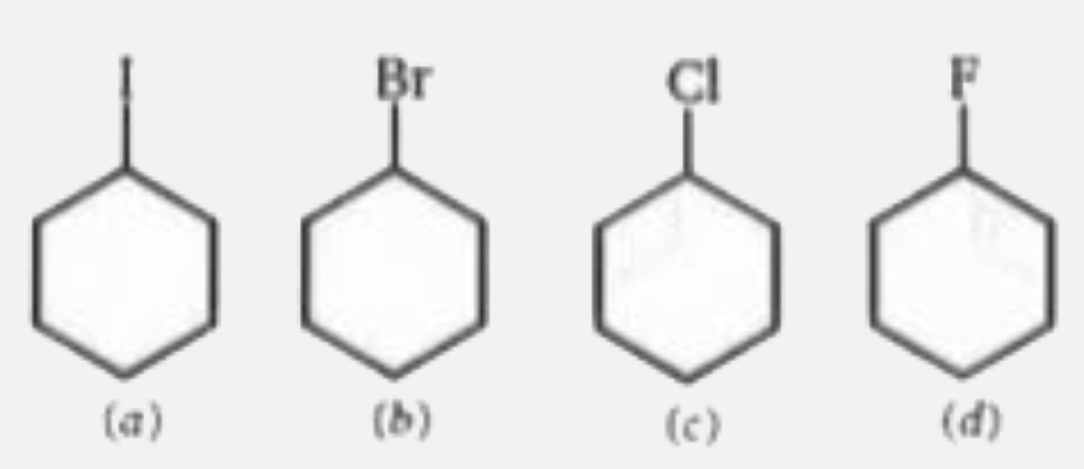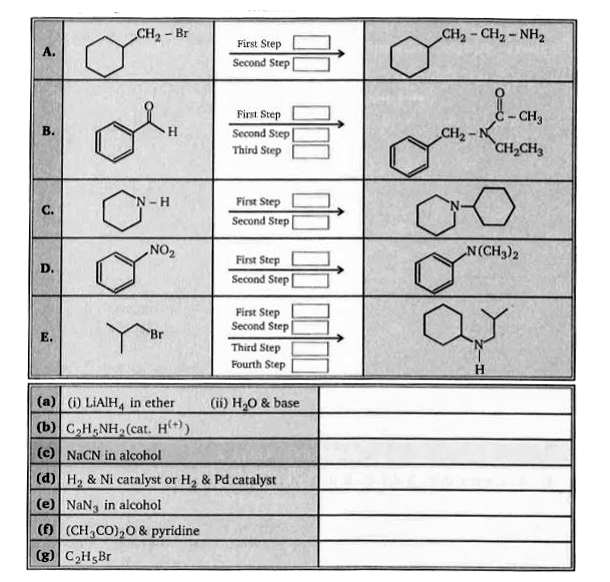Comprehension
The first demonstration of the stereochemistry of the SN2 reaction was carried out in 1934 by Prof. E.D Hughes and his colleagues at the University of London. They allowed (R) -2- iodooctane to react with radioactive iodide ion (∗I−)

The rate of substitution (rate constant K5) was determined by measuring the rate of incorporation of radioactivity into the alkyl halide. The rate of loss of optical acitivity from the alkyl halide (rate constant K0) was also determined under the same conditions:
What ratio K0/Ks is predicted for each of the following stereochemical scenarios :
For inversion reaction : Solution in Kannada
KOKS=1
KOKS<1
KOKS>1
can not be predicted
A-c,
Topper's Solved these Questions
- BOOK - MS CHOUHANCHAPTER - ALKYL HALIDES (SUBSTITUTION REACTIONS)EXERCISE - LEVEL-241videos
ALKYL HALIDES (SUBSTITUTION REACTIONS)
- BOOK - MS CHOUHANCHAPTER - ALKYL HALIDES (ELIMINATION REACTION) EXERCISE - LEVEL-225videos
ALKYL HALIDES (ELIMINATION REACTION)
- BOOK - MS CHOUHANCHAPTER - AMINESEXERCISE - Level-21videos
AMINES
Similar Questions
Statement - 1 : Nucleophilicity order in polar-protic solvent is I−<Br−<Cl−<F−
Statement-2 : Due to bigger size of I it is less solvated in polar-protic solvent.10:38View SolutionComprehension
E2 raction → Elimination bimolecular
In the general mechanism of the E2 reaction a strong base abstract a proton on a carbon atom adjacent to the one of the leaving group. As the abstracts a proton , a double bond forms and the leaving group leaves.

Identify the rate of reaction of given compounds in E2 reaction:
 View Solution
View SolutionFive amine syntheses are outlined below. In each reaction box enter a single letter designating the best reagent and conditions selected from the list at the bottom of the page.

 03:50View Solution
03:50View SolutionRate Of Radioactive Disintegration
03:03View SolutionCompreshension The first demontration of the stereochmistry the S_(N^(2)) reaction was carred out in 1935 by prof ,E,D Huges and his colleagues at the University of london , they allowed ® -2-iodooctane to react with readioactiver iodide ion .^(I-) . CH_(3)underset("2- iodooctane")underset(I)underset(|)(CH)(CH_(2))_(5)CH_(3)+^(*)I^(-)hArrCH_(3)underset("radioactive ") underset("2-iodooctane")underset(^(*))underset(|)(CH_(3))(CH_(2)_(5)Ch_(3)+I^(-) the rate of subsittuiton (rate constant K_(s) was determined by measuring the rate incoprotion of radioactvity into the alkyl halide the rate of loss of optical activity from the alky halide (rate constant K_(@) was also deterined under the same coditions consitions . what ratio K_(@)//K_(S) is prediected for each of hte following stereochemical scenarios : For inversion reaction : (A) (K_(@))/(K_(s))=1 (b) (K_(@))/(K_(S))lt1 (c ) (K_(@))/(K_(s))gt1 (d) can not be predicted B. For equal amounts of both retention and inversion ? (K_(@))/(K_(s))=1 (b) (K_(@))/(K_(S))lt1 (c ) K_(@))/(K_(s))gt1 (d) can not be predicted
02:24View Solutionrate of SN2 reaction is:
 03:03View Solution
03:03View SolutionThe order of rate of hydrolysis of alkyl halides 1∘,2∘,3∘ and CH3X by the SN2 pathway is :
01:28View SolutionThe rate of decay of radioactive element
02:30View SolutionThe order of rate of hydrolysis of alkyl halides 1∘,2∘,3∘ and CH3X by the SN2 pathway is :
View SolutionWith time, the rate of radioactive disintegration :
01:26View Solutionरेडियोएक्टिव क्षयता दर का मात्रक है
View SolutionFor the following rate law determine the unit of rate constant. Rate k[A]^((1)/(2))[B]^(2)=[R]^((5)/(2))
01:47View SolutionThe unit of radioactivity decay rate is
00:48View SolutionThe rate of an S_(N)2 reaction depends upon the
02:05View SolutionThe unit of radioactivity decay rate is
02:26View SolutionThe order of rate of hydrolysis of alkyl halides 1^(@),2^(@),3^(@) and CH_(3)X by the S_(N^(2)) pathway is :
01:45View Solution

